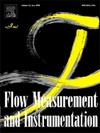天然气回环振动特性及减振措施研究
IF 2.3
3区 工程技术
Q2 ENGINEERING, MECHANICAL
引用次数: 0
摘要
为研究中低压回路试验装置内管道的流致振动现象及相应的缓解措施,对不同工况下管道的流动特性及振动特性进行了实验和数值研究。通过实验验证了数值模拟方法的可靠性。通过对监测点压力脉动和振动信号进行傅立叶变换分析,找出了管道振动的根本原因。结果表明,在特定工况下,天然气压力脉动与管道振动频率之间的共振是导致管道过度振动的主要原因。此外,封头结构在气流中诱导涡流形成,产生低频压力脉动。提出了一种安装支撑约束的减振方法,有效地将管道测量点的振动降低到5 mm/s以下,满足了标定要求。在不同压力和流量的情况下,进一步优化限制装置的布置可以将排量降低30% - 70%。该研究为理解和减轻中低压条件下管道振动提供了理论见解和工程实践参考。本文章由计算机程序翻译,如有差异,请以英文原文为准。
Research on vibration characteristics and reduction measures of natural gas loop
To study the flow-induced vibration phenomena and corresponding mitigation measures in pipelines within a medium-low pressure loop test facility, this paper experimentally and numerically investigates the flow characteristics and vibration behavior under different operating conditions. The reliability of the numerical simulation method was validated through experiments. By applying Fourier transform analysis to pressure pulsation and vibration signals at monitoring points, the root cause of pipeline vibration was identified. The results indicate that under specific operating conditions, resonance between natural gas pressure pulsations and pipeline vibration frequency is the primary cause of excessive vibration. Additionally, the header structure induces vortex formation in the gas flow, generating low-frequency pressure pulsations. A vibration suppression method involving the installation of support restraints was proposed, effectively reducing vibration at pipeline metering points to below 5 mm/s, meeting calibration requirements. Further optimization of restraint placement achieved displacement reductions of 30 %–70 % across varying pressures and flow rates. This study provides theoretical insights and practical engineering references for understanding and mitigating pipeline vibrations under medium-low pressure conditions.
求助全文
通过发布文献求助,成功后即可免费获取论文全文。
去求助
来源期刊

Flow Measurement and Instrumentation
工程技术-工程:机械
CiteScore
4.30
自引率
13.60%
发文量
123
审稿时长
6 months
期刊介绍:
Flow Measurement and Instrumentation is dedicated to disseminating the latest research results on all aspects of flow measurement, in both closed conduits and open channels. The design of flow measurement systems involves a wide variety of multidisciplinary activities including modelling the flow sensor, the fluid flow and the sensor/fluid interactions through the use of computation techniques; the development of advanced transducer systems and their associated signal processing and the laboratory and field assessment of the overall system under ideal and disturbed conditions.
FMI is the essential forum for critical information exchange, and contributions are particularly encouraged in the following areas of interest:
Modelling: the application of mathematical and computational modelling to the interaction of fluid dynamics with flowmeters, including flowmeter behaviour, improved flowmeter design and installation problems. Application of CAD/CAE techniques to flowmeter modelling are eligible.
Design and development: the detailed design of the flowmeter head and/or signal processing aspects of novel flowmeters. Emphasis is given to papers identifying new sensor configurations, multisensor flow measurement systems, non-intrusive flow metering techniques and the application of microelectronic techniques in smart or intelligent systems.
Calibration techniques: including descriptions of new or existing calibration facilities and techniques, calibration data from different flowmeter types, and calibration intercomparison data from different laboratories.
Installation effect data: dealing with the effects of non-ideal flow conditions on flowmeters. Papers combining a theoretical understanding of flowmeter behaviour with experimental work are particularly welcome.
 求助内容:
求助内容: 应助结果提醒方式:
应助结果提醒方式:


